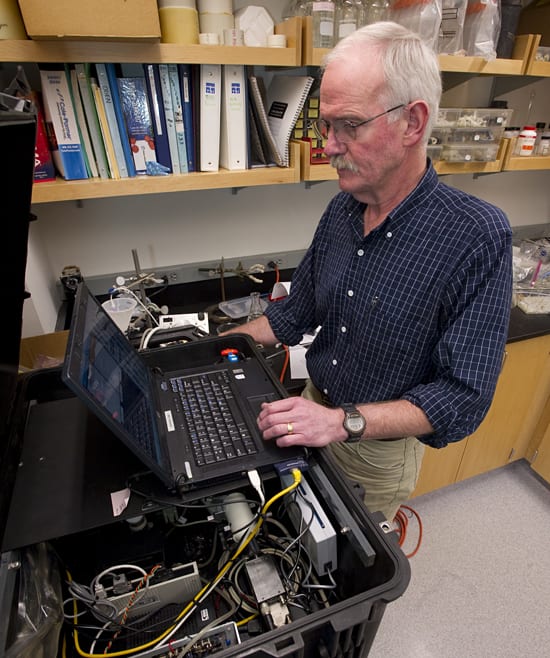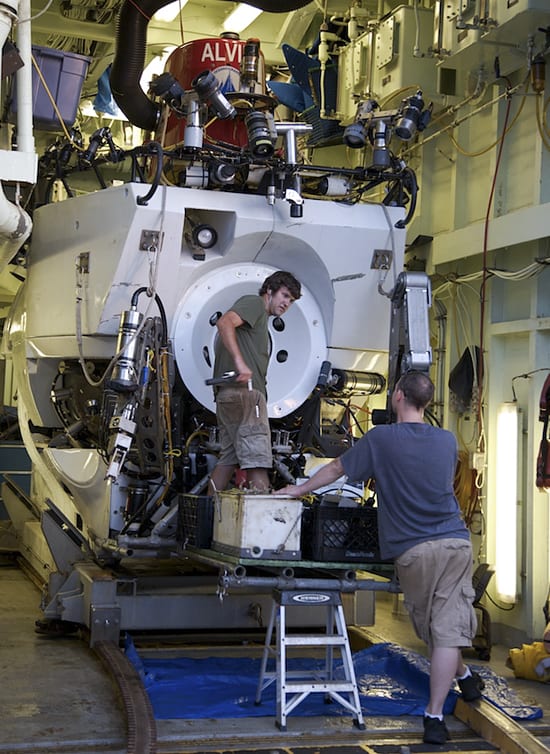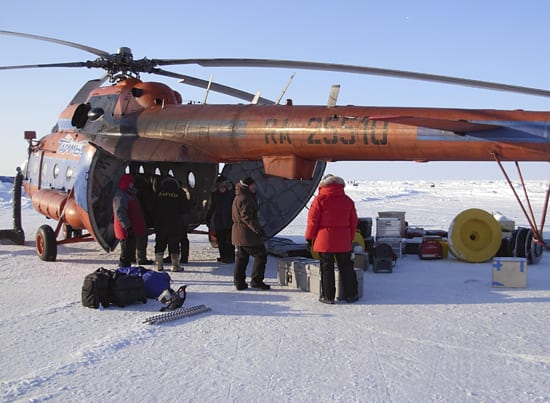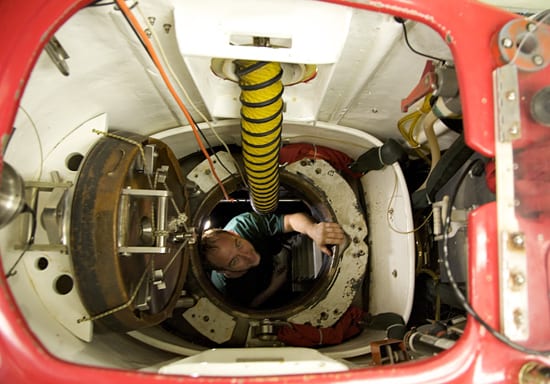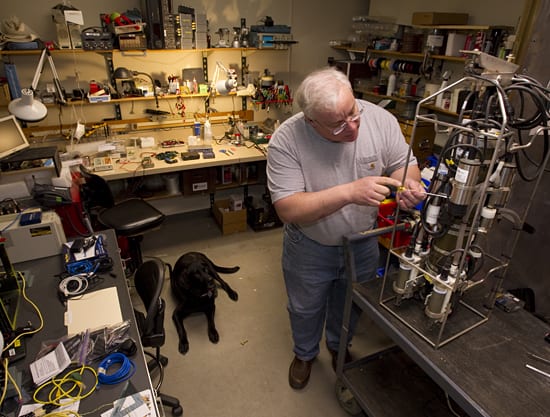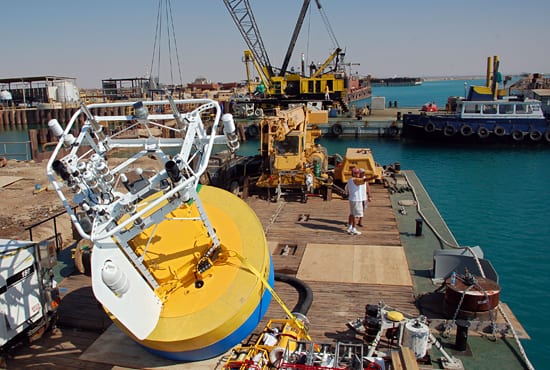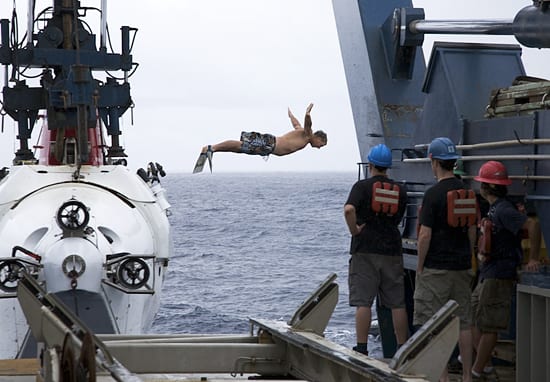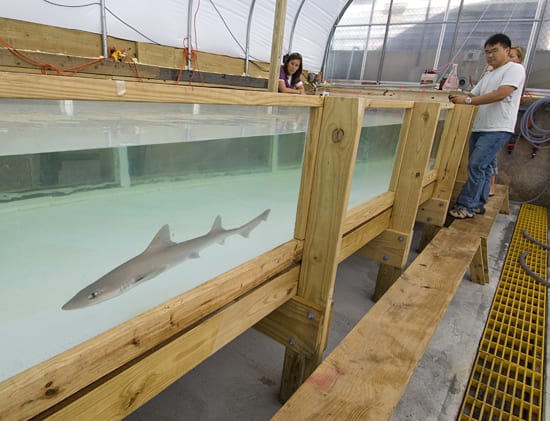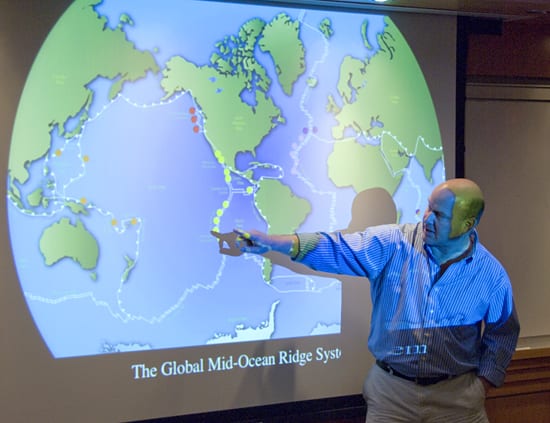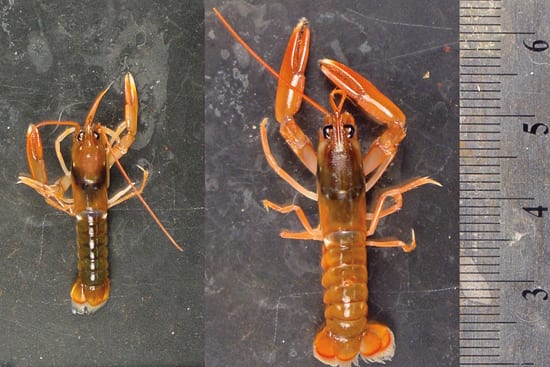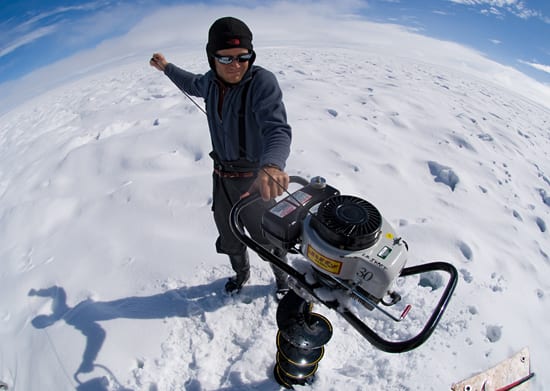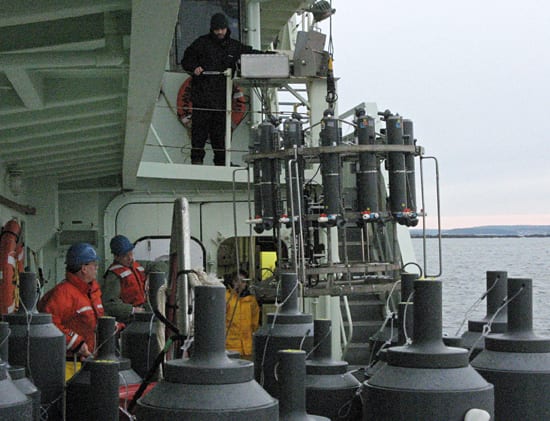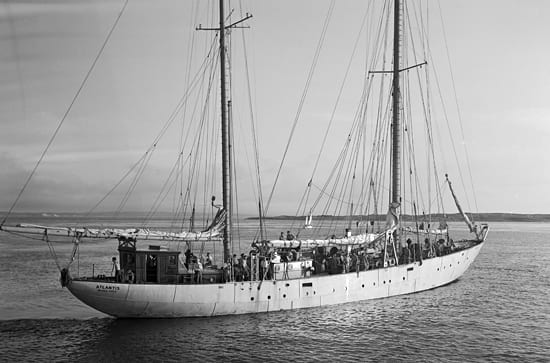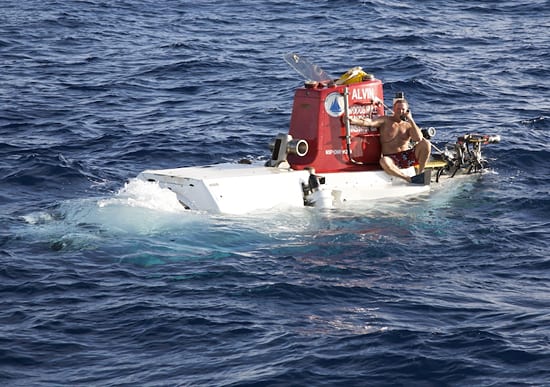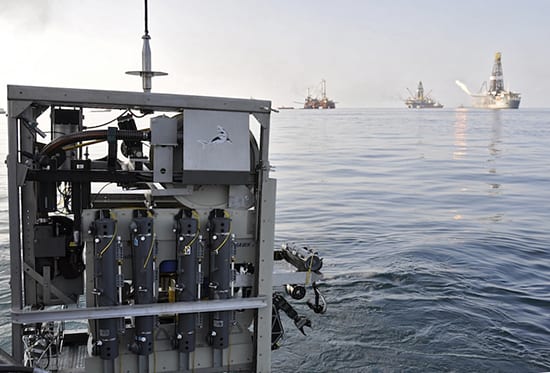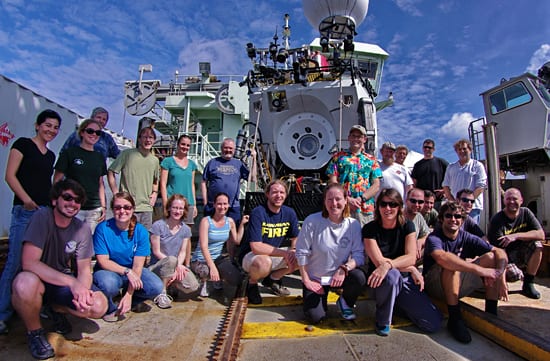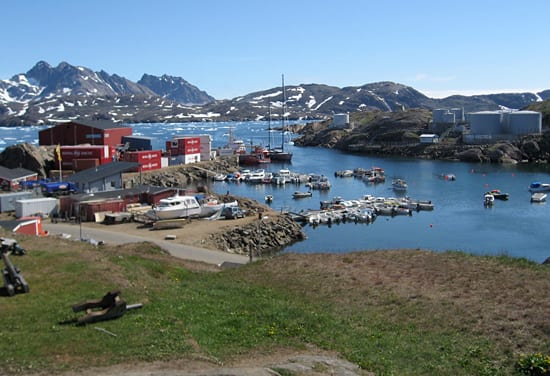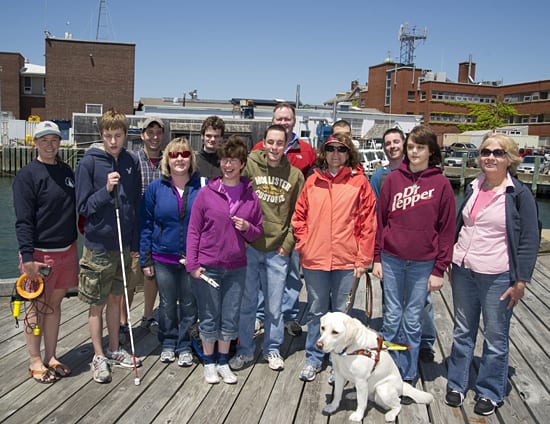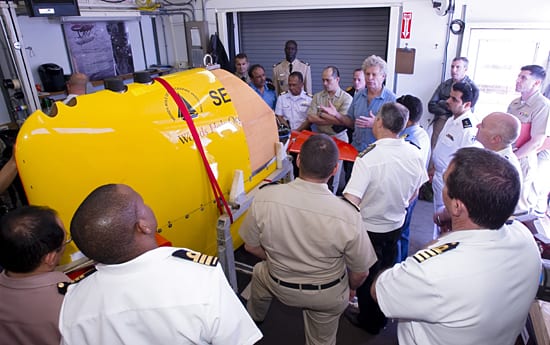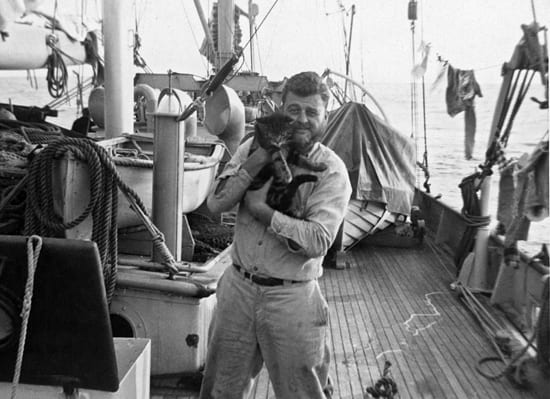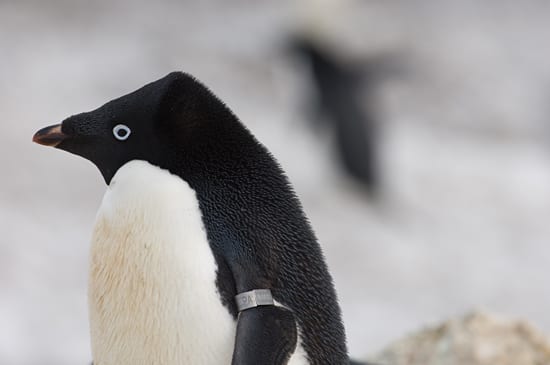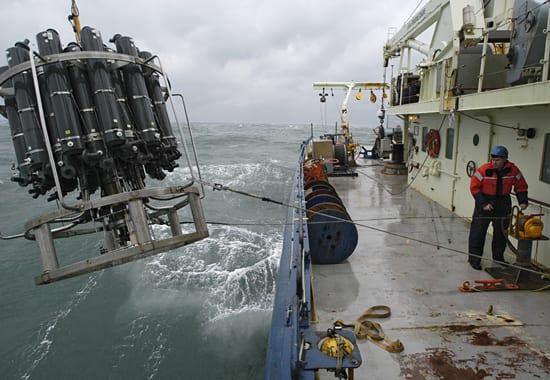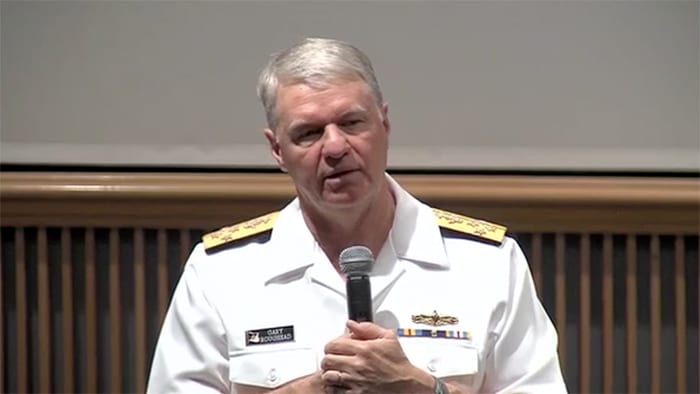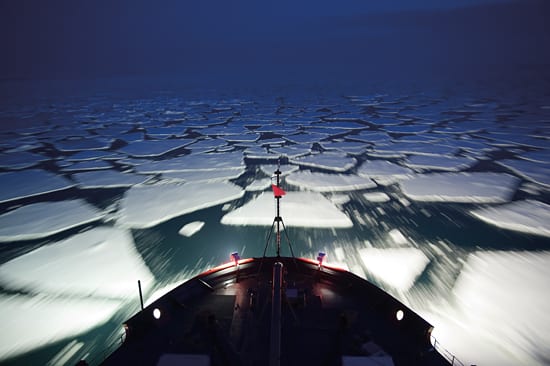Multimedia
Safer drinking water
WHOI Biologist Scott Gallager leads a team developing a new tool to keep drinking water safe, by watching how single-celled organisms (protozoans) react to toxins in the water. Toxins typically…
Read MoreAlvin turnaround
DSV (Deep Submergence Vehicle) Alvin dives to the sea floor almost every day of the year in the service of ocean science. In the relatively few hours between dives, a…
Read MoreObserving the Arctic
Arctic climate research takes extra effort from people and instruments alike. In April 2010 WHOI engineers Jeff Pietro and Kris Newhall loaded buoys specially designed for the ice onto a…
Read MoreUp the hatch!
Somewhere in the tropical Pacific, DSV Alvin crew member Jeff McDonald emerges from the sub’s hatch, after giving an orientation to a future scientist-observer. Alvin holds three, a pilot and…
Read MoreTinkerer, sailor, real-time data guy
Under the watchful gaze of his dog Little Bear, engineer Marshall Swartz adjusts an instrument in his lab at Woods Hole Oceanographic Institution (WHOI). Swartz recently discovered a way to…
Read MoreMooring maneuver
WHOI Upper Ocean Proccesses Group engineers John Kemp, Jim Ryder, Paul Bouchard, and Jason Smith, and scientist Tom Farrar went to the Red Sea in November 2009 to recover and…
Read MoreDiving dismount
RV Atlantis steward Carl Wood dives back into the ocean after securing the lifting lines used to recover the human occupied vehicle (HOV) Alvin. Known for his graceful exits, Carl…
Read MoreSniffing out prey
A smooth dogfish shark (Mustelus canis) — a small species, fairly common in waters off New England — swims in the newly-built testing flume located in the Environmental Systems Lab…
Read MoreWhere in the world?
Where in the world is Tim Shank? One of WHOI’s most peripatetic scientists, biologist Shank points to some of his research sites. He studies the evolution and linkages of animals…
Read MoreLobster surprise
Post-doc Justin Ries—now at UNC—along with WHOI scientists Anne Cohen and Dan McCorkle grew shell-building ocean animals in water under air containing different levels of carbon dioxide, a greenhouse gas…
Read MoreFire it up
In July 2008, a team of four scientists from the Woods Hole Oceanographic Institution and the University of Washington returned to Greenland for their third year to learn how the…
Read MoreStudying Red Tide in the Gulf of Maine
Researchers Jefferson Turner of UMass Dartmouth, left, foreground, Dennis McGillicuddy of WHOI (green jacket), and winch operator John Gaylord of WHOI, above, deploy a CTD rosette system on R/V Oceanus…
Read MoreEarly days
Atlantis—the first Woods Hole Oceanographic Institution research vessel—departs the dock in July of 1947. This early cruise to Bikini Atoll yielded sediment cores from Henry Stetson’s coring device, echosounder profiles…
Read MoreReady for pickup, please
RV Atlantis steward Carl Wood chats with the Alvin pilot inside the sub during a recovery in the Equatorial Pacific. Launched in 1964, the sub’s most famous exploits include exploring…
Read MoreOn Site in the Gulf
WHOI Senior Scientist Cabell Davis, together with MIT/WHOI Joint Program graduate student Nick Loomis, this week deployed their holographic plankton camera on a remotely operated vehicle (ROV) from the M/V…
Read MoreSaving Sentry
These cruise members, including the Sentry team and the Alvin group—shown during a recent Atlantis cruise near the Galapagos Islands—breathed a collective sigh of relief after a dramatic resuscitation of…
Read MoreHome for the summer
The picturesque port of Tasiilaq in southeastern Greenland served as home base for scientists investigating conditions in a glacial fjord for two months in 2008. Led by physical oceanographer Fiamma…
Read MoreUnsung heroine brings science to students
Amy Bower (in orange jacket), of the WHOI Physical Oceanography department, hosts a group of students from the Perkins School for the Blind. Bower, who is legally blind, collaborates with…
Read MoreA commanding audience
Students in the Naval Command College get a firsthand view of the autonomous underwater vehicle Sentry from WHOI engineer Rod Catanach during a recent visit to the Institution. The NCC…
Read MoreAll paws on deck
Atlantis sheltered a number of cats over the years, including this one held by Atlantis second mate (and photographer) Don Fay during a 1935 research cruise. One cat deserted a…
Read MoreA superbreeder?
During a 2007 expedition to Antarctica, scientists travelled to Ross Island to study the biology of the frigid, bountiful Ross Sea through the eyes of Adélie penguins. Small aluminum identification…
Read MoreRoughing it
WHOI physical oceanographer Glen Gawarkiewicz recovers a CTD rosette in heavy weather north of Cape Hatteras, North Carolina in 2005. Gale or storm conditions prevailed during the entire cruise, damaging…
Read MoreVisit from Chief of Naval Operations
CNO Admiral Gary Roughead visits WHOI.
Read MoreInto thin ice
Bow lights show the way as the U.S. Coast Guard icebreaker Healy streaks through slim pancake ice in the nighttime Bering Sea. After long, dark winters, sunlight returns to the…
Read More
